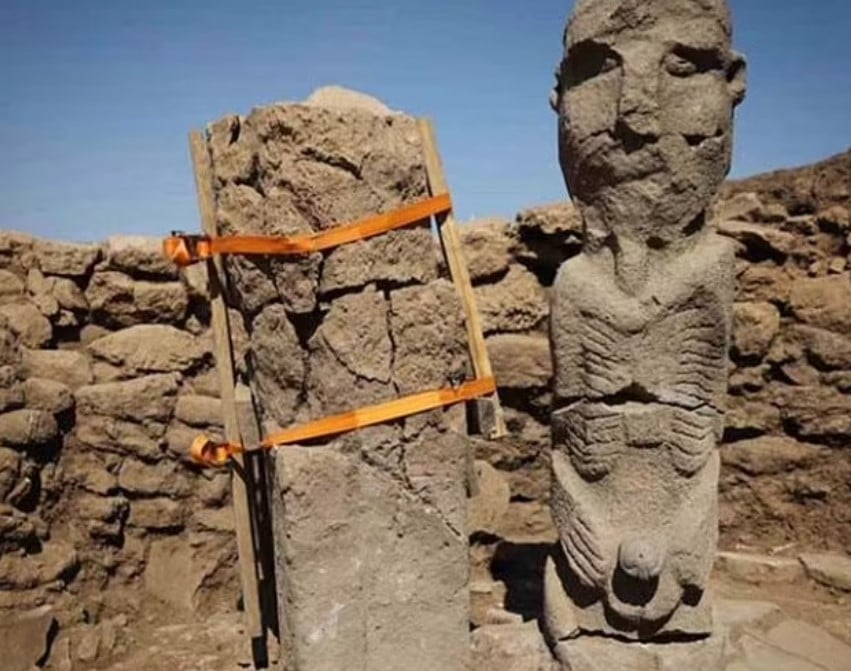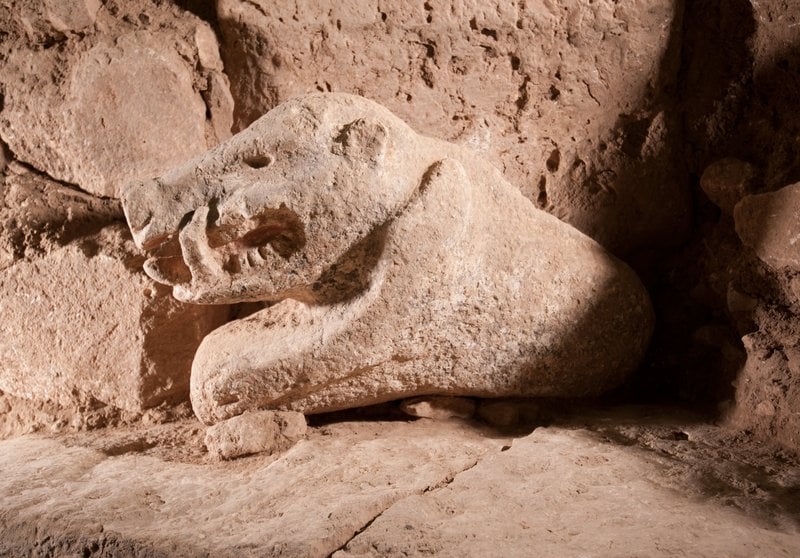
In Turkey, archaeologists have discovered an ancient statue that’s nearly eleven thousand years old. It shows a man clutching his genitals.
They also found a life-sized statue of a wild boar. These statues were found in Gobekli Tepe and Karahan Tepe, two of the world’s oldest temple sites.
The wild boar statue, made from limestone, was found at Gobekli Tepe. It dates back to between 8700 B.C. and 8200 B.C. This statue is about 4.4 feet long and 2.3 feet high, according to the German Archaeological Institute.
Visitors in Anatolia are well-advised to see the monoliths of Göbeklitepe, between 3 and 6 metres high, which were seen as "game-changers" when discovered by archaeologists in the 1990s.https://t.co/T9MTUgFuzf
— ErginHava (@ErginHava2) October 13, 2023
Archaeologists discovered red, black, and white colors on the surface of the sculpture, indicating that it was once painted. They discovered the giant statue of the man clutching his genitals in Karahan Tepe, Turkey, about 22 miles from Gobekli Tepe.
According to a statement from Turkey’s Ministry of Culture and Tourism, the statue is of a 7.5-foot-tall man with visible ribs, spines, and shoulders.
Benjamin Arbuckle, an anthropology professor at the University of North Carolina at Chapel Hill, who wasn’t part of the dig, said these discoveries are amazing and change how we understand early pre-agricultural communities.
Researchers also discovered a small vulture sculpture near Karahan Tepe. They haven’t specified the exact age of the newly found statues, but the site itself is roughly eleven thousand years old.
Purpose of newly discovered statues in Turkey unclear

Formerly, archaeologists believed early communities of around eleven thousand years ago in Southwest Asia were quite simple, small, and generally egalitarian, as explained by Arbuckle. However, the findings at Gobekli Tepe and Karahan Tepe in the last thirty years have shown that this belief is not accurate.
The reason for these newly discovered sculptures remains a mystery. Ted Banning, an anthropology professor at the University of Toronto, who was not part of the research, said findings at Karahan Tepe are particularly intriguing.
He pointed out that any explanation of the statue is based on guesses at this stage but suggested that the person depicted might be deceased. The statue could be of a noteworthy ancestor linked to the building where it was located.
The way the figure is holding its genitals could provide additional clues as to its meaning. “The fact that the figure is clutching its genitals is also consistent with this interpretation by potentially symbolizing that this person was the progenitor of a social group, such as a lineage or clan, associated with the building,” Banning concluded.
See all the latest news from Greece and the world at Greekreporter.com. Contact our newsroom to report an update or send your story, photos and videos. Follow GR on Google News and subscribe here to our daily email!



